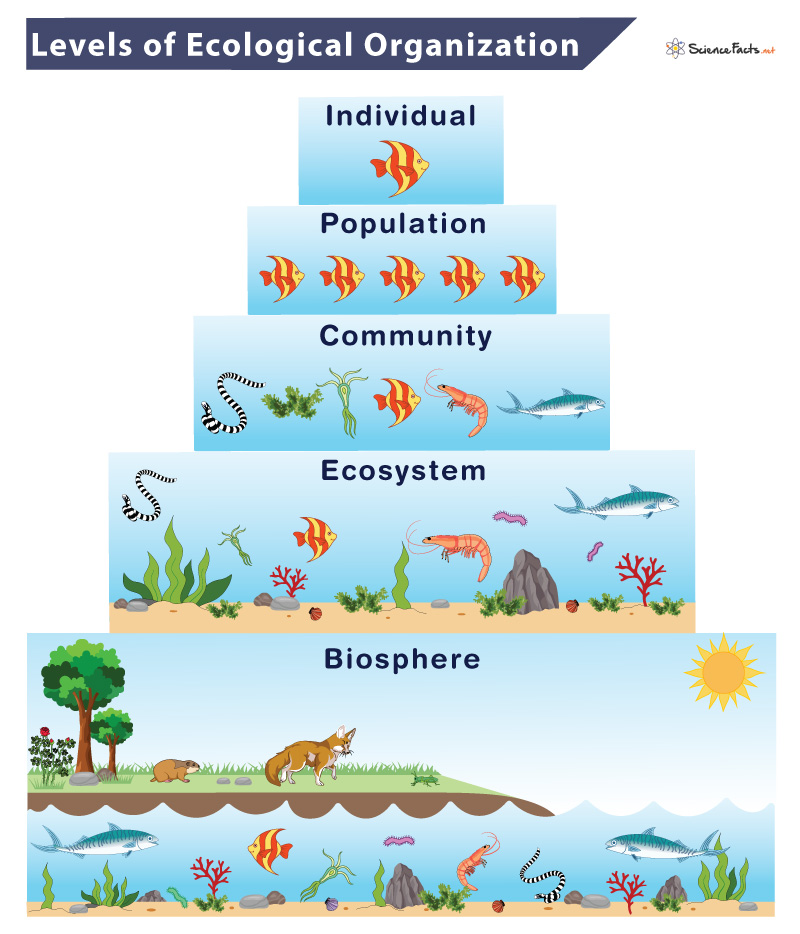1. Organism
2. Population
3. Community
4. Ecosystem
5. Biosphere
Single human beings, a plant of any species, or an animal are individuals in an ecosystem. Populations can vary in size. For example, the total human population in the United States is different from that of India. Again, the population of palm trees in the Indian Ocean differs from that in the Pacific. Various factors determine the characteristics of a community. They are its role in the ecosystem, the range of its various populations, the geographic area where it resides, the diversity of the species, and the interactions between various populations. Communities are of two types based on their size:
a. Minor Community
Minor communities are small in size, less organized and depend on other communities for their existence.
b. Major Community
Major communities are large and more complexly organized compared to minor communities. Unlike the minor communities, they are capable of independent existence. Broadly, there are two types of ecosystems in nature such as terrestrial and aquatic. Also, the ecosystem can be natural or artificial. The nature of organisms in an ecosystem depends on the environment in which they are found.
